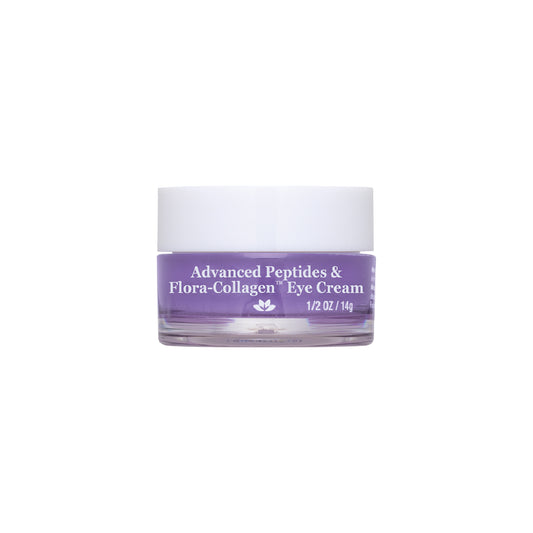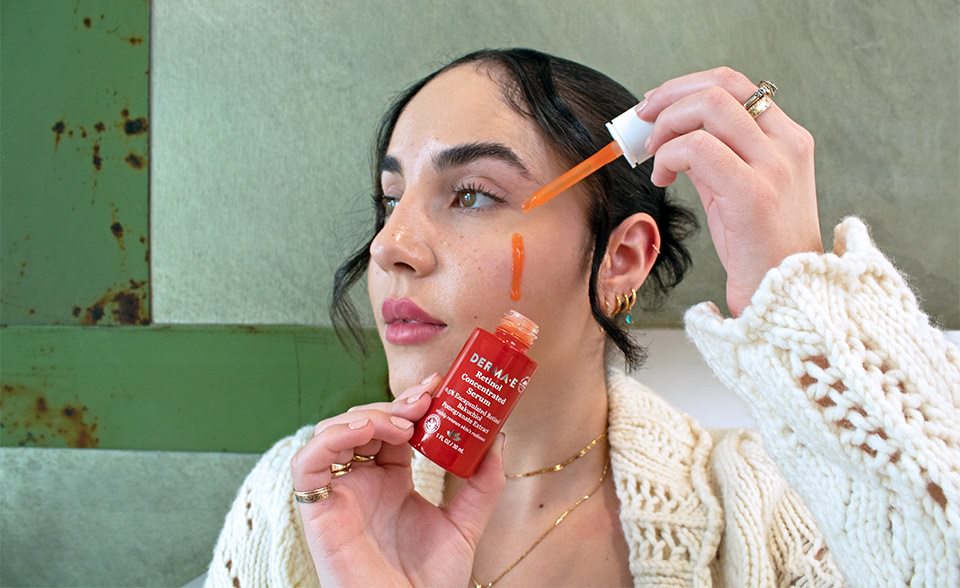We Debunk Common Retinol Skincare Misconceptions and Get to the Facts
Retinol has been making a buzz as a holy grail ingredient in skincare. With its popularity growing to a household name in everyone's skincare routines, even those new to the beauty market may have wondered about its acclaimed power.
What's Retinol and Why Is It so Popular in Skincare?

By definition, retinol is a kind of retinoid—an umbrella term used to describe the compounds of vitamin A derivatives—known for its all-encompassing skin benefits, from reversing the visible signs of skin aging to treating acne and improving skin texture and uneven skin tones.
Retinol is available both in prescription and over-the-counter forms with varying strength and efficacy, and no two retinol products are quite the same.
It can be a bit overwhelming to try and figure out what kind of
retinol works on your skin or to add into your beauty regimen, especially when there are so many retinol myths that make it hard to know whether or not you're using it correctly.
In this article, you will learn about the most common retinol skincare myths and the underlying truths behind them.
Retinol Myth 1: Retinol Is the Same as Retin-A
If you think that retinol and Retin-A are the same, think again. Sure, both are forms of vitamin A that work in similar ways, but they also contain key differences in availability, usage, strength, reaction time, and side effects.
Retinol is a natural form of vitamin A. It is often found in over-the-counter skincare products available at your local pharmacy in the form of serums, eye creams, facial oils, and moisturizers. It is known as an effective anti-aging treatment that can help reduce the appearance of fine lines and wrinkles, uneven skin tone, and helps increase collagen production.
On the other hand, Retin-A is a brand name for tretinoin—a synthetic form of vitamin A only available by prescription from dermatologists or doctors. Generally, a prescription-strength retinoid is used to treat inflammatory acne and minimize breakouts. It can also diminish hyperpigmentation and even out the skin tone.
Another point of difference is that tretinoin is already a retinoic acid, so it does not need to be converted into one. That means it works faster than over-the-counter retinol products, and its effects on the skin typically manifest after two to three months.
Even Retin-A at its lowest strength is more powerful than retinol products at their highest concentration. Thus, Retin-A also causes more irritating side effects than an over-the-counter retinoid product.
The common side effects of using Retin-A include the following:
● Redness and dryness of the skin
● Burning and stinging sensation
● Peeling and irritation in the application area
If you experience severe side effects, it is highly advised to consult a doctor immediately.
Myth 2: Retinol Makes Skin More Sensitive to the Sun
Retinol does not make the skin more sensitive to the sun. However, sun exposure does make retinol less effective because UV radiation degrades vitamin A.

Furthermore, this myth stems from the way retinol works. Since retinol increases skin cell turnover, it eliminates dead skin cells and produces new and healthy ones. But, these new skin cells are susceptible to sun damage.
As a result, you should always wear sunscreen when using topical retinol products. This is because SPF protects your skin from sun damage and prevents possible photodamage. It would also be counterproductive to not use sunscreen since one of the benefits of using retinol is to minimize the appearance of photoaging, and the major contributing factor to photoaging is UV radiation.
Hence, to ensure sun protection while using retinol, you should remember that:
● It is best to use retinol at night
● When applied during the day, use sunscreen with SPF 30 or higher (do not forget to apply to your neck and reapply it every two hours)
● If you are going to stay under the sun for a long time, wear protective clothing like hats, sunglasses, and long sleeves for additional protection
● Whenever possible, avoid peak sunlight typically between 10:00 a.m. to 4:00 p.m.
● When you experience sunburns, it is best to pause your retinol application for a week or until it subsides
Myth 3: Retinol is Only for Mature Skin
Retinoids have been used as an effective way to treat acne for over 25 years. It was not until the 1980s that scientists discovered its many anti-aging effects, such as its ability to help reduce the appearance of fine lines and wrinkles, and since then it has been reintroduced as an effective anti-aging treatment for more mature skin types.
The truth is, regardless of your age, retinol use can help address several facets of your skin concerns like acne, volume loss, fine lines and wrinkles, and more.
Prescription retinoids (including topical tretinoin) are only approved by the Food and Drug Administration (FDA) to be used for ages 12 and up. Meanwhile, some dermatologists prescribe off-label retinoids for children under 12.
Myth 4: Retinol Exfoliates Your Skin
Contrary to popular belief, retinol doesn't actually exfoliate your skin like alpha hydroxy acids would. Occasionally, retinol can cause dryness and flakiness as the dead skin cells come off from the top layer of the skin. This side effect is a reaction of the skin in building tolerance to the compound, especially if it is used for the first time.

The fact is, retinol actually works on a cellular level by affecting your gene expression, which enhances collagen production and helps to even out your skin.
Since cell turnover is usually triggered by retinoid use, new skin cells coming in can cause the shedding of dead skin cells, which might simulate the effects of exfoliation on your skin.
As a solution, you can reduce (if not avoid) this side effect by starting with low percentage retinol products, and slowly work your way up. Reducing your use to once every other day, or even once a week, also helps to reduce excessive peeling. Once your skin has successfully adapted to it, then you can gradually increase the concentration of your retinol while applying it more frequently.
You can also further avoid experiencing dryness and flakiness by:
● Buffering with a hydrating moisturizer either before or after the application of retinol
● Keeping your skin hydrated by drinking plenty of water
● Using only a pea-sized amount for the entire face
● Always using sunscreen, especially during the day
Remember to be patient with the process, as dryness and peeling are normal side effects of retinol. It will eventually diminish once you have adjusted to the product, making way for positive results in your skin.
Myth 5: Retinol Gives You Instant Results
In order for retinol to become effective, the enzymes in the skin will convert it into retinoic acid first. It won’t work unless the conversion process is finished, that’s why it usually takes up to six months to see visible results on the skin.
Since it takes time for retinol to work and show results, the earlier you start, the better. This will help fix the existing damage in your skin, prevent further damage, and improve overall skin quality as early as possible.
Retinol Myth 6: Retinol Can Only Be Used on Dry Skin
There's been a lot of hearsay (even on the very labels of retinol products) that retinol can only be applied to fully dry skin in order to avoid irritation. Despite what the instructions say, there is nothing within scientific journals that proves that you can't apply retinol to damp skin.
Neither dry skin nor damp skin affects the efficacy of retinol or its ability to repair the skin. Rather, it has more to do with your personal skin chemistry.
Retinol Myth 7: Retinol Can't Be Used with Vitamin C
To be fair, this statement isn't completely false. Although vitamin C and retinol use was not recommended before due to retinol reducing the potency of vitamin C products, more stabilized forms of vitamin C are now available on the market that won't degrade if you use them with retinol products.
However, sensitive skin types might still benefit from not using both products together due to the increase in chances of irritating skin from using too many active ingredients.
The best bet is to use the two products in rotation (vitamin C products one day, retinol products the next day) or by using only vitamin C in the morning and retinol products in the evening, so your skin adapts.
Concurrent retinol and vitamin C use has been proven to decrease the visible signs of aging, on their own and together.
Retinol Myth 8: Retinol Can't Be Used Under the Eyes
Many of us have heard that retinol thins skin, which is why it's usually recommended to avoid applying retinol to the delicate skin around your eyes.
Well, neither of these retinol myths are true. We already covered how retinol may lead to shedding of dead skin cells, which may lead to skin appearing thinner in those areas. However, skin may actually become thicker due to retinol's ability to stimulate collagen production.
Since the orbital area does have the most delicate skin, retinol creams are usually not recommended for use around the eyes.
That doesn't mean that you can't use an eye cream that contains gentle retinoids in it. If you experience irritation after using a retinol eye cream, it's recommended that you reduce the frequency of use to every other day, and only at night (if using a vitamin C product during the day).
Conclusion
Known as a holy grail ingredient in skincare, retinol has proven to produce a lot skin care benefits. But with these benefits are misconceptions surrounding it and confusing users on its nature and efficacy. If not debunked, these retinol myths can possibly overshadow the advantages users can get from incorporating retinol into their skin care regimen.
Besides, even though recognized as an anti-aging agent, the benefits of using retinol are not confined to its anti-aging properties. It can also address numerous skin problems like acne, hyperpigmentation, and poor skin texture, among others.
Despite the possible side effects, using retinol is a must-try component in everyone’s skincare routine. It may not show results instantly, but the long and complex process of using this product is guaranteed to produce healthy and youthful skin— probably the common goal of everyone in the beauty market.




